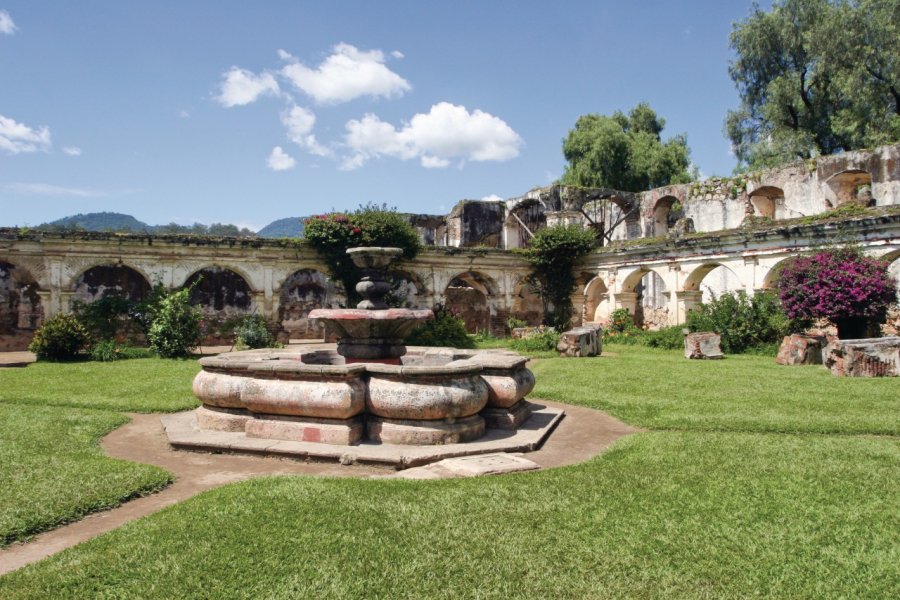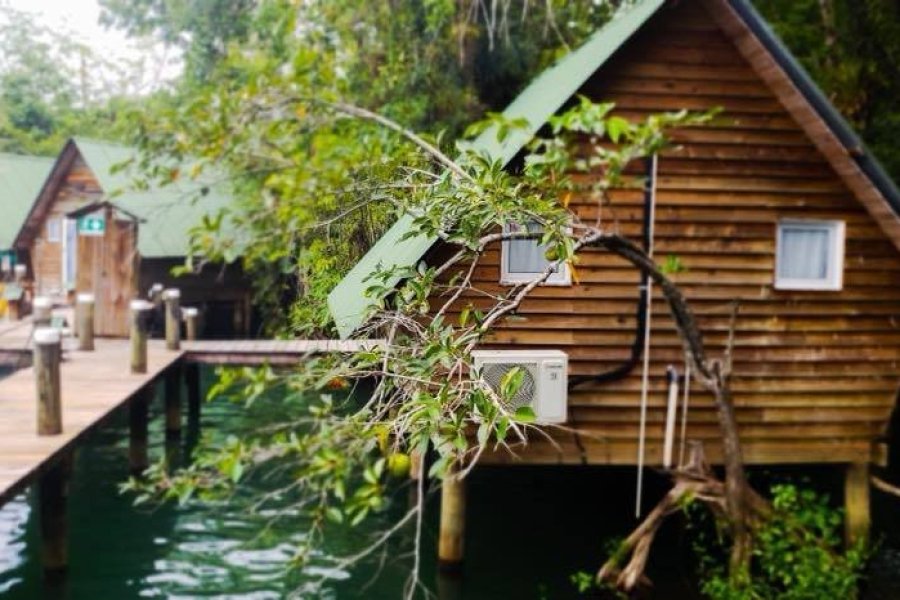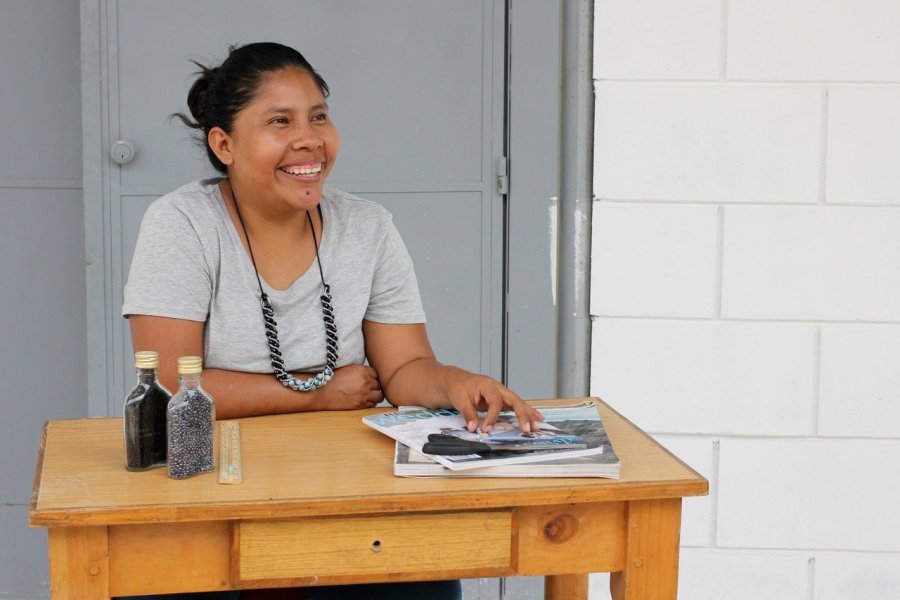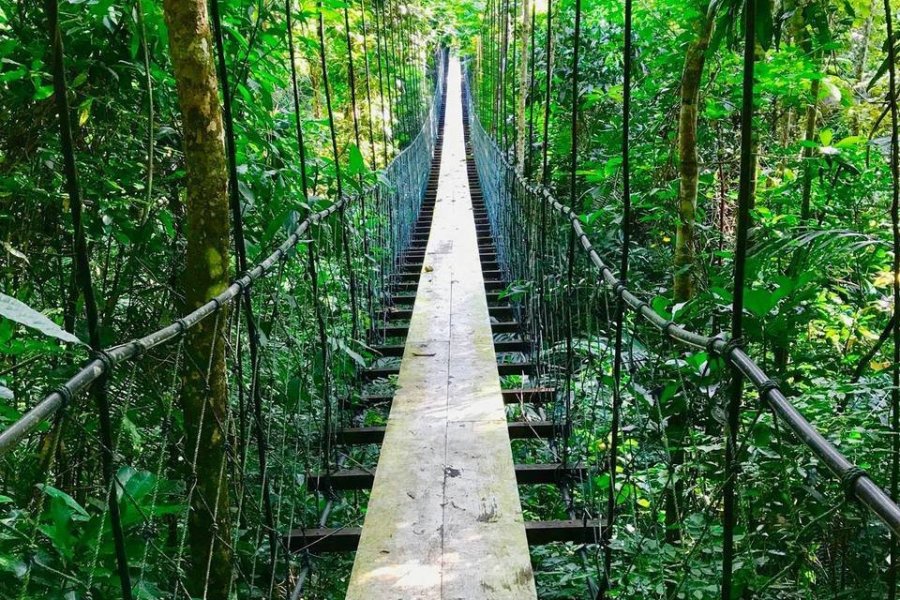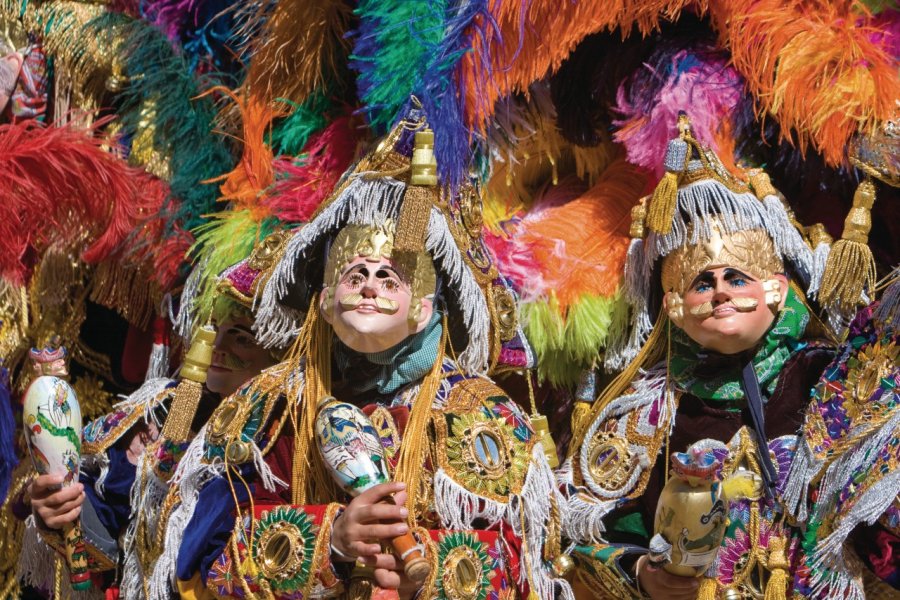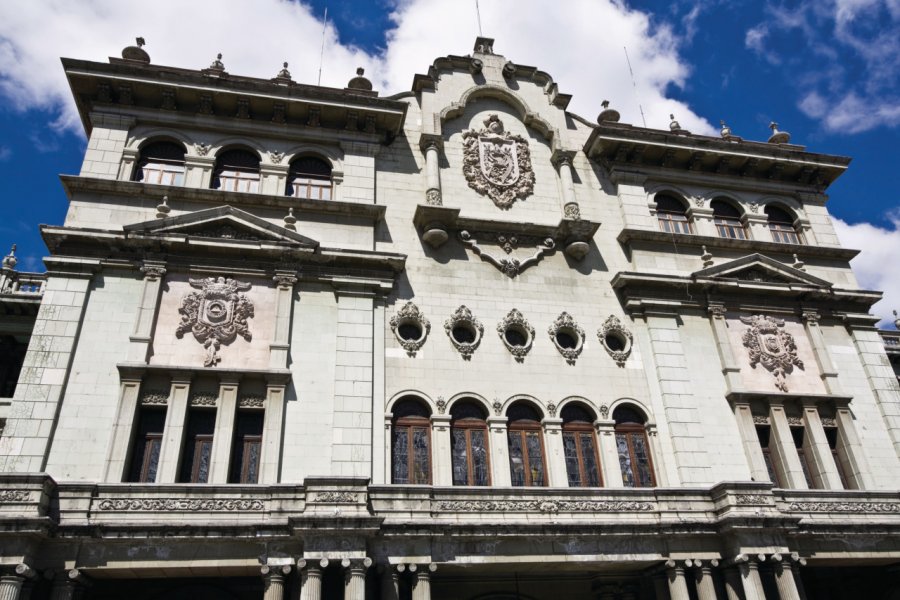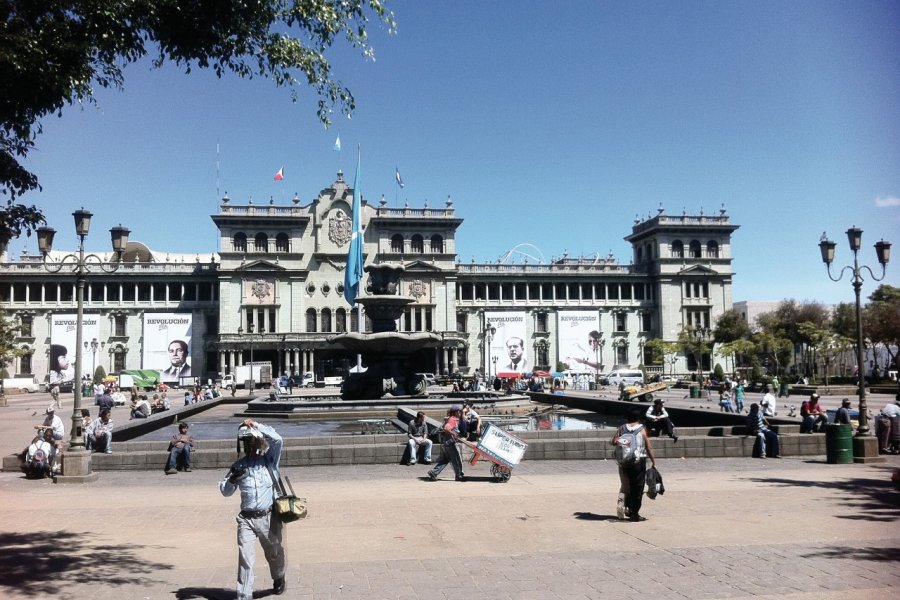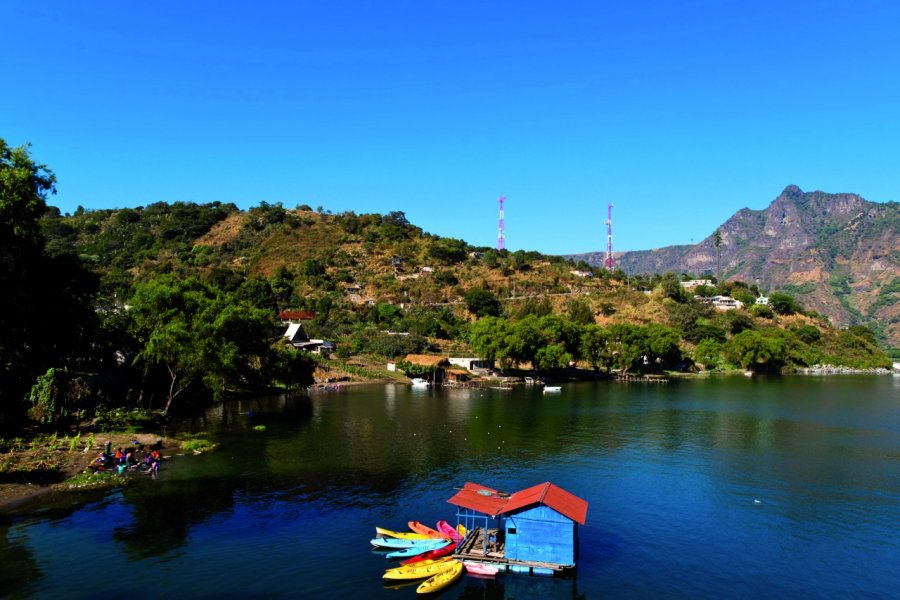Travel guide Guatemala
This small Central American country is located in southern Mexico: surrounded by Belize, Honduras and El Salvador, Guatemala is a multiple land with an ancestral history. A true cultural mosaic, the land of the Mayans is made up of a thousand landscapes, each with its own character. It is undoubtedly the ancient site of Tikal that we think first, a temple celebrating the gods of Mayan civilization nestled in the heart of the jungles with the lush vegetation of the Petén of the north of the country, populated by jaguars, howler monkeys and multicoloured butterflies. Then the immense Lake Atitlán comes to mind, on whose shores thrives a myriad of villages dominated by volcanoes. But these are just a few Guatemalan gems. Guatemala's tour guide will take you to the four corners of the country, from the cornfields of the Highlands to the powerful waves where pelicans surf on the Pacific coast, from the Alta Verapaz coffee region and the natural and crystal clear pools of Semuc Champey, to the Caribbean tranquility of Livingston, a small Garifuna village on the east coast, accessible only by waterway. And what about the splendid colonial city of Antigua, including the city centre with its cobbled and colourful streets full of good addresses and picturesque churches, listed as a UNESCO World Heritage Site... Between pre-Columbian architecture, breathtaking natural sites (concentrating jungles, mountains, heavenly beaches, volcanoes) and the good mood of the Chapines, the inhabitants of Guatemala, a stay in this part of the world is certainly a good choice!
What to see, what to do Guatemala?
-
Book an activity
-
Customized travel
- The most beautiful cities Guatemala
When to go Guatemala ?
To the question "When to go to Guatemala?", many Europeans on holiday answer between July and August, which is the high tourist season (hotel rates tend to rise), despite the rainy season which runs from mid-May to mid-October. Travellers also flock between mid-December and mid-January to enjoy the holidays in a much milder climate than in summer, but also on the occasion of Semana Santa (Holy Week, preceding the Easter weekend), but here again, prices explode. If you go to Guatemala between September and the first half of October, you will enjoy much cheaper housing rates, but chances are that the rain will not spare you, because that's when tropical depressions hit the Mayan country. The best time to travel to Guatemala is therefore during the dry season, from November to mid-May, taking care to avoid the Christmas and New Year holidays. When to go to Guatemala? From early November to mid-December and from mid-January to mid-May (be careful, though, winter is harsh in the heights), except Easter week.
Suggested addresses Guatemala
Travel Guatemala
-
Find a hotel
-
Car Rental
-
International e-SIM package
-
Find a local agency
Despite its small size, Guatemala has a lot to offer and lends itself to all types of tourism. From Tikal to El Mirador, the many archaeological sites in the Petén - in the north - will delight lovers of old stones and history. The latter will also enjoy walking among the ruins of the charming Antigua - classified as a UNESCO World Heritage Site - where they will come across lovers of pretty patios and cozy tea and coffee shops. Nature lovers will marvel at Guatemala's biodiversity, from cloud forests to lakes, rivers and waterfalls. Given the possibilities of hiking and trekking allowed by the thirty or so volcanoes of the country, sportsmen will not be harmed and will surely go to the assault of Acatenango, El Fuego and Tajumulco, the summit of Central America. Finally, the party people, surfers and farniente followers will put their luggage on the Pacific.
Find unique Stay Offers with our Partners
How to go Guatemala
How to go alone
Guatemala is perfectly suited to independent travelers and, provided that the high tourist seasons are avoided, it is quite possible to build your itinerary as you go along, depending on the encounters and opportunities. From a security point of view, Guatemala City should be avoided by solo travelers, without becoming paranoid. One should simply avoid ostentatious signs of wealth. The rest of the country is safe and the inhabitants welcoming.
How to go on a tour
For a full stay, allow two weeks. There are many tourist agencies offering organized trips, and although Guatemala is only one-fifth the size of France in terms of area, travel between the two coasts can be long due to winding roads that are not always paved. If you have less time, focus your stay on one area: Antigua and the Pacific, Atitlan and the highlands, Tikal and the Petén or the Caribbean coast.
How to get around
The bus network covers the whole territory very well (saving the cost of renting a car) and the different companies are divided into three categories, from the most to the least comfortable (and expensive): the luxurious express buses, the first class buses and the gleaming and colorful chicken-buses. On Lake Atitlan and to get to Livingston, you can take a motorboat, while to get around town you can take a cab, an uber or a three-wheeled tuc-tuc.
Featured articles Guatemala
Discover Guatemala
A small territory still little known to Europeans, Guatemala is a real jewel that is just waiting to be discovered. From its Mayan heritage to its cultural richness, through the beauty of its landscapes and the diversity of its reliefs, it will seduce history lovers as well as nature and trekking enthusiasts. It is a multiple country that can be discovered, learned and lived at the rhythm of its inhabitants, indigenous as well as ladinos - the heirs of the Mayan and Spanish mixture inherent to the Conquista of 1524. Nevertheless, still deeply marked by 36 years of civil war - from 1960 to 1996 - Guatemala suffers from a bad reputation. If social inequalities are indeed prevalent, the stereotype of a country where violence and insecurity reign seems reductive, far from the reality that one is confronted with once there. These are all the facets that we will try to present here.
Pictures and images Guatemala
The 12 keywords Guatemala
1. Chicken-bus

These are the most economical and common buses in the country. While they originally carried schoolchildren from the United States, they have begun a second life in Guatemala. They were renamed after their cargo: poultry - live - both piled in boxes on the roof and tied to the passengers' bundles.
2. Communities
"Las comunidades" is the word used to describe groups of people living in small villages. In concrete terms, it refers to the indigenous people, or "locals". More and more players in the tourism sector are working hand-in-hand with communities to break down the country's social divide.
3. Cuadras
Rather than giving street names, Guatemalans express distances in terms of "cuadras" (blocks). If you ask for the address of a store, you'll be told its location, for example, to turn right"en tres cuadras", i.e. to take the third street or avenue on the right.
4. Gringo
You may hear it as you pass by. A "gringo" - "gringa" in the feminine - is a foreigner, a western tourist. Although this word may seem pejorative, don't be offended, and don't hesitate to use it yourself during a conversation! In fact, it is not uncommon to be affectionately called "gringuito".
5. Huipil

It is the upper part of the traditional dress of indigenous women. Adorned with multicolored embroidery whose patterns vary from one community to another, this short-sleeved blouse is a means of social recognition in its own right. Some huipils require several months of painstaking work, like true works of art.
6. Jamaica
This refreshing drink made from hibiscus flowers and with its characteristic red color is often offered in the lunch menus of traditional restaurants. While its sweet taste contrasts wonderfully with typical dishes such as pepián, jamaica is also very rich in iron, calcium, phosphorus, as well as vitamins A, B1, C and E.
7. Corn

Declared a National Cultural Heritage Site, it is the staple of the Guatemalan diet. Having played a fundamental role in Mayan civilization, its cultivation is now of crucial importance to the country's socio-economic life. There are 13 varieties, including black, white and yellow corn.
8. Orchids
The national flower of Guatemala is the Monja Blanca - White Nun - a beautiful white orchid threatened with extinction. The cause: the destruction of its natural habitat and illegal looting. Several conservation initiatives are underway, including one that introduced 700 flowers into the country's forests between 2017 and 2018.
9. Firecrackers
Any excuse is good enough to explode firecrackers! They resound particularly on the days of the important festivals, on the public road or at the exit of the churches, but also give rhythm to the daily life of the Guatemalans. Whether it is in the middle of the afternoon or at night, some do not hesitate to use them... And abuse them.
10. Propina
You may not discover this word until the end of your meal, when you receive the cuenta. While it is customary for a satisfied customer to leave a tip of 10% of the bill for service, many restaurants automatically include "la propina " in the bill, sometimes without telling the customer beforehand.
11. Religion
From the survival of Mayan beliefs to the rise of evangelical Protestant communities through Catholic colonization, religion is omnipresent in Guatemala. This is evidenced by the number of churches that can be found throughout the country, as well as the processions, mobilizations and gatherings that are often attended.
12. Weaving

It is the first art of the country, which comes from a long tradition. Clothes, blankets, fabrics, table runners, pillowcases... It is difficult to spend a few days in Guatemala without seeing a profusion of textiles. In some stores, it is even possible to observe people at work, sitting behind a hand loom.
You are from here, if...
You greet - almost - every person you pass on the street and accompany your "¡Hola!" with a frank smile.
You don't need to ask the chicken-bus driverfor the fare, and you know exactly where to get off, even if no stop is indicated. You also know your way around a pick-up truck, so well that you climb into the back without checking with the driver that his destination is actually yours.
You call your interlocutor "amigo", even if you've just met him or her. This lends a warm tone to your exchanges.
You have your own notion of time and distance. For example, you may consider a 1.5-hour hike to be "just a 30-minute walk".
You eat tortillas at every meal. These little flat cornmeal cakes are to you what bread is to the French.
You punctuate certain sentences with a guttural "ah ah ". You use it when you're explaining something, not the other way around.

